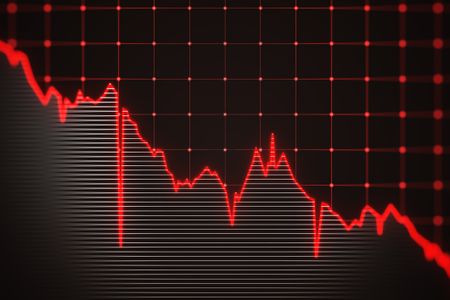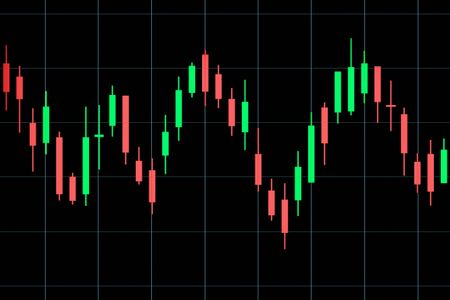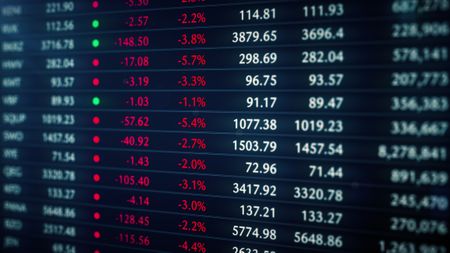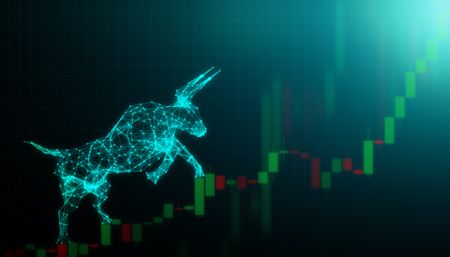Watch Out for Bear Market Rallies
Thanks to strong gains recently, the stock market has erased all of its early-2016 losses. But that doesn’t mean investors are out of the woods yet.

Stocks have been on a tear since February 11, gaining 11.9% through March 17 and erasing much of the 12.6% downturn since May 2015, when Standard & Poor's 500-stock index notched an all-time high. And with its 0.4% gain on March 18, the S&P 500 is now positive for the year.
What should investors make of the rally? Correction over, bear market averted and onward for the indefatigable bull market, charging into its eighth year, right?
Not so fast. It turns out that bear markets are routinely marked by rallies that seem diabolically designed to fool the largest number of investors into letting down their guard and jumping back into the market, only to be clobbered again when the bear reasserts dominance.

Sign up for Kiplinger’s Free E-Newsletters
Profit and prosper with the best of expert advice on investing, taxes, retirement, personal finance and more - straight to your e-mail.
Profit and prosper with the best of expert advice - straight to your e-mail.
Since the start of the 20th century, every single bear market has spawned at least one rally during which stock prices rose 5% or more, according to data from InvesTech Research, a newsletter. Investors were treated to rallies of 10% or greater during 14 of the 21 bear markets since 1901—and often several such rallies within the same bear market. For instance, in the bear market that began in 2007, stocks staged 12 rallies of 5% or more, with four of the 12 logging gains of more than 10%. The 30-month-long bear market that began in March 2000 staged nine rallies of 5% or more; four of those surpassed 10%. Looking at bear market rallies since World War II, the Leuthold Group, an investment research firm, found that the average bear market rally produces stock gains of nearly 11% over a six-week period, recovering nearly 60% of the preceding decline.
Assuming that a bear market began in May 2015, the number of bear market rallies so far is below average. We've only seen two: a 13.4% gain between August 25 and November 3 of 2015, and the 11.9% rally since February 11. (Technically speaking, the market is in a state of limbo today. A bear market would be confirmed if the S&P 500 dropped to 1,708, representing a 20% decline from the index’s May high of 2,134.72. Confirmation of the continued existence of the bull market requires the S&P to surpass its previous high.)
For now, investors are left with the same—still largely unanswered—questions about the direction of the stock market. But even if the bull market is intact, says InvesTech publisher Jim Stack, risk remains elevated.
For one thing, stocks aren't cheap. Despite recent setbacks that wrung some excesses out of the market, stocks still look expensive on the basis of price to earnings, cash flow and book value (assets minus liabilities), according to Leuthold. If stocks were to reverse course and take valuations down to typical bear market lows, we could see price declines from recent levels approaching 30%, Leuthold says.
On the positive side, the recent upswing has been surprisingly broad-based, with the number of advancing shares far outpacing decliners. Oil prices have rebounded, with crude up nearly 40% from February lows. Another round of economic stimulus bodes well for Europe. Worries about China have abated somewhat. In the U.S., economic indicators are mostly positive. Manufacturing activity has been contracting for five months, but the service sector—which accounts for two-thirds of the economy—is expanding (although, it, too, has shown some recent volatility). Corporate earnings this year could see some relief as the drag from falling oil prices on the energy sector and the strong dollar lessens.
All things considered, the chances of a rare, eighth bull market birthday don't seem unreasonable, says Burt White, chief investment officer for investment advisory firm LPL Financial. “Bull markets don't die of old age. They die of excesses,” he says. But that doesn't mean the market hasn't gotten ahead of itself for now, says Russ Koesterich, chief global strategist at BlackRock. “Against a backdrop of continued uncertainty in the global economy, the recent rally is beginning to look a bit excessive,” he says. “March may have come in like a lamb, but the lion may be lurking.” Or maybe the bear.
Get Kiplinger Today newsletter — free
Profit and prosper with the best of Kiplinger's advice on investing, taxes, retirement, personal finance and much more. Delivered daily. Enter your email in the box and click Sign Me Up.

Anne Kates Smith brings Wall Street to Main Street, with decades of experience covering investments and personal finance for real people trying to navigate fast-changing markets, preserve financial security or plan for the future. She oversees the magazine's investing coverage, authors Kiplinger’s biannual stock-market outlooks and writes the "Your Mind and Your Money" column, a take on behavioral finance and how investors can get out of their own way. Smith began her journalism career as a writer and columnist for USA Today. Prior to joining Kiplinger, she was a senior editor at U.S. News & World Report and a contributing columnist for TheStreet. Smith is a graduate of St. John's College in Annapolis, Md., the third-oldest college in America.
-
 Winning Strategies for Financial Advisers as Clients' Lives Evolve
Winning Strategies for Financial Advisers as Clients' Lives EvolveHow can the wealth management industry help make life transitions easier for the adviser and the client?
By David Conti, CPRC Published
-
 How Advisers Can Establish Relationships With HNW Prospects
How Advisers Can Establish Relationships With HNW ProspectsThese strategies can help to build influence with high-net-worth individuals, who are often looking to an adviser for insight rather than solutions.
By Jeremy Green, CFP®, CTFA, CLU®, CEBS®, AEP®, EA, MSFS Published
-
 Stock Market Today: Dow Rises 854 Points From Its Intraday Low
Stock Market Today: Dow Rises 854 Points From Its Intraday LowIf there's one thing markets hate, it's uncertainty. But uncertainty is all they're getting these days.
By David Dittman Published
-
 Stock Market Today: Dow Sinks 715 Points as Inflation Unrest Grows
Stock Market Today: Dow Sinks 715 Points as Inflation Unrest GrowsInflation worries are showing up in both hard and soft data.
By Karee Venema Published
-
 Stock Market Today: It's Going to Stay Choppy for Stocks
Stock Market Today: It's Going to Stay Choppy for StocksAuto-focus can show us a lot about uncertainty on the ground and in the stock market.
By David Dittman Published
-
 Stock Market Today: Auto Tariffs Send Stocks Lower
Stock Market Today: Auto Tariffs Send Stocks LowerThe main indexes snapped their win streaks after the White House confirmed President Trump will talk about auto tariffs after the close.
By Karee Venema Published
-
 Stock Market Today: Stocks Seesaw After Big Market Rally
Stock Market Today: Stocks Seesaw After Big Market RallyThe latest consumer confidence data showed sentiment remains low.
By Karee Venema Published
-
 Stock Market Today: Markets Celebrate Trump's Tariff Détente
Stock Market Today: Markets Celebrate Trump's Tariff DétenteConsumer discretionary stocks led 10 of the 11 S&P 500 sector groups well into the green.
By David Dittman Published
-
 Stock Market Today: Stocks Swing Higher After Early Slump
Stock Market Today: Stocks Swing Higher After Early SlumpNegative earnings reactions for Nike, FedEx and Micron kept pressure on the main indexes, though.
By Karee Venema Published
-
 Stock Market Today: Stocks Struggle After Big Fed Gains
Stock Market Today: Stocks Struggle After Big Fed GainsAn unexpected rise in existing home sales couldn't save stocks on Thursday.
By Karee Venema Published